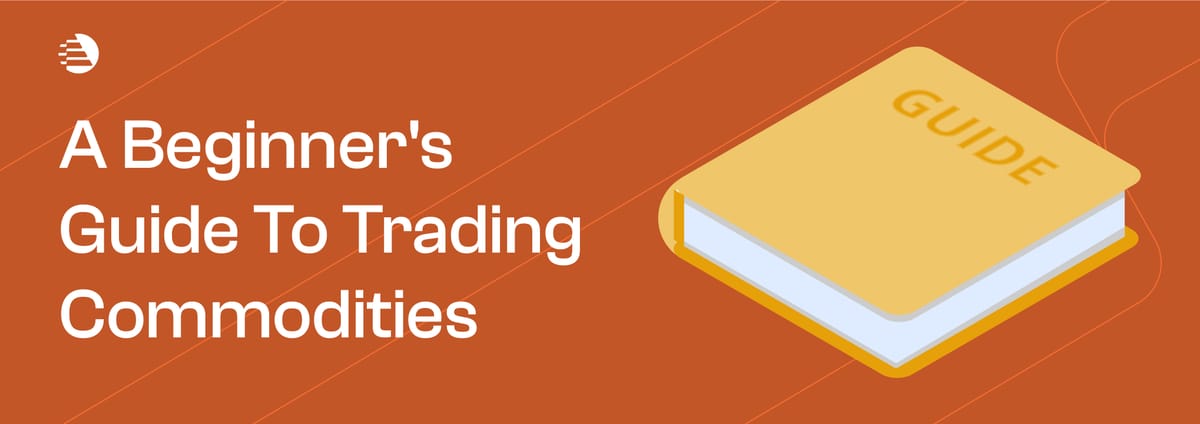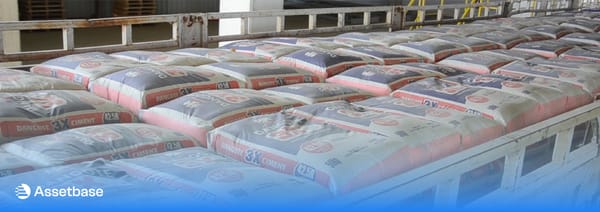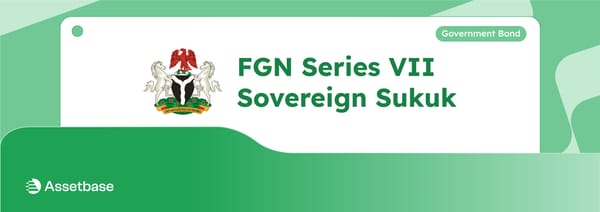A Beginner’s Guide to Trading Commodities

Depending on when or where you grew up, you probably heard of women investing in gold. Or maybe you heard of someone buying millions worth of maize and wondered if it wouldn’t all go rotten before they get a chance to finish it. These stories might have seemed puzzling - why would anyone invest in physical goods instead of stocks or bonds?
The answer lies in understanding what commodities actually are and how deeply embedded they are in our economy. These are the tangible goods that form the foundation of global commerce and are so integral to our daily lives that we hardly think about them.
Consider your typical morning. You wake up from a wooden bed (timber), wear a plaid shirt (cotton), and pair your belt with a matching pair of shoes (leather), make yourself a cup of tea (cocoa, milk, sugar), step into your car (metal), check that you have enough fuel (oil and gas), and start on your way to work. You interact with commodities every day, whether you mean to or not.
In this article, we’ll explain what commodities are, the different types of commodities, and discuss the key concepts.
What are Commodities?
Commodities are tangible assets that are used in everyday human activities. They are naturally occurring and essential for modern life. Unlike other investment assets, commodities are typically standardised. This means that one unit of a commodity is essentially the same as another, regardless of the producer. This standardisation ensures consistent pricing across global markets, regardless of the specific producer or buyer.
Types of Commodities
As you’ve seen earlier, commodities are numerous and almost innumerable. Behind every major technology you see is a host of commodities at play. While countless in number, they are not overwhelming. We can simply classify them into two categories: hard and soft commodities.
Hard Commodities
These are natural resources that are mined or extracted from the hard ground. So, think: gold, copper, diamonds. Even gasoline and natural gas- they are extracted from the earth, too.
Soft Commodities
These commodities grow above ground. They are agricultural products and are either harvested or reared. Here, think of plants like maize, sorghum, coffee, cotton, and livestock and animal products like cattle and leather.
The Gold Behind the Glitter: When Markets Get Volatile
Now that you understand commodities, you might wonder why people invest in them beyond basic consumption needs. Commodities are the perfect hedge against certain risks. Commodities may react differently from stocks and bonds in various economic and geopolitical situations, enhancing risk-adjusted returns and reducing the overall volatility of your portfolio.
When currencies weaken due to monetary policy uncertainty or fiscal instability, commodities often maintain or increase their value since they're priced in real terms. As ‘paper money’ loses purchasing power, tangible assets like gold, oil, and agricultural products become more valuable relative to currency.
Geopolitical events like wars and supply disruptions due to natural disasters like hurricanes, droughts, and floods may impact the supply of, and increase the demand for, certain commodities. For instance, the Russia-Ukraine conflict sent wheat futures jumping 28% in mere weeks, while Europe's 2021-2022 energy crisis saw natural gas prices surge over 700%.
Unlike other financial assets, changing macroeconomic factors tend to positively impact commodities. Factors like inflation work in tandem with the prices of goods and services
In August of 1971, U.S. President Richard Nixon announced a series of economic measures, including the suspension of the dollar’s convertibility into gold. The implications for gold were monumental, leading to the gold boom that marked the decade. When President Nixon ended the gold standard in 1971, gold was valued at just $40.80 per ounce. By 1980, it had rocketed to $850—a staggering 1983% gain as inflation surged and economic uncertainty peaked. This wasn't a lucky break; it demonstrated gold's role as a hedge against crisis when traditional investments faltered.
Oil has shown similar explosive potential during supply disruptions. The Yom Kippur war of 1973 and the Iranian Revolution of 1979 resulted in the oil crises that sent crude prices skyrocketing from around $3 to over $10 per barrel— a 233% gain that rewarded investors who understood energy market fundamentals.
There are also cases of demand surge due to uncertainties. Countries and corporations often stockpile essential commodities during uncertain periods, creating additional pressure on demand. Strategic reserves of energy, metals, and food commodities increase when future availability seems unpredictable. The rice market during the COVID-19 pandemic provides an excellent example of how uncertainty alone can drive massive commodity price increases. Major importers, including the Philippines, Malaysia, and various African nations, engaged in panic buying, while even non-rice-consuming countries increased their purchases as a backup food supply. This increased the price of a tonne of rice to $648, the highest it had been in 15 years.
These aren't isolated incidents—they reveal fundamental patterns about how commodities behave during economic stress, supply disruptions, and geopolitical tensions. Understanding these cycles helps explain why commodities have become essential portfolio tools for managing risk and capturing opportunities that traditional markets often miss.
Trading Commodities
You’ve come this far in the article because you either want to learn about commodities and start trading commodities, or you want to hedge your portfolio and start trading commodities.
Remember, commodities are essential goods. They are exchanged in dedicated and carefully organised markets, and here, we see the forces of demand and supply at work, without manipulation.
Commodity trading involves buying or selling in dedicated markets to generate a profit. There are two ways to do this: future trading and spot price.
Futures Trading
This relies on future contracts where you agree to buy or sell a certain quantity of a commodity at a predetermined price. It is a bet on where a commodity's price will be at a specific future date. If you're right about the direction, you make money. If you're wrong, you lose money. But you never actually want or receive the physical gold.
Here, you can hold long and short positions. In long positions, you believe that the price of a commodity will rise, and you buy a futures contract to profit from the rising prices. In short positions, you believe that the price of a commodity will fall, so you sell a contract to profit from the falling prices.
One key advantage of futures trading is margin trading, which allows you to control positions larger than your available capital. You don't need the complete money to trade. Instead, your broker requires only a fraction of the total contract value as a deposit. Both long and short positions can be closed out early, giving you flexibility in managing your trades.
For example, if you want to buy a gold contract worth $50,000, you don't need to have the full amount. Your broker might allow you to purchase the contract by depositing only $5,000, providing you with leverage of 1:10. This means you can control a $50,000 position with just $5,000 of your capital.
Let's create a market situation. When you put up $5,000 as margin, you're controlling a contract worth $50,000 (100 ounces × $500 per ounce). What you have paid for is a contract that states, 'I have the right to buy 100 ounces of gold in December at the rate of $500 per ounce, regardless of what the market says in December.'
Before December arrives, you can choose to sell that contract back to someone else for the current market price and keep the difference. If, when you sell the contract, the cost of gold per ounce is $700, you have made a $20,000 profit ($200 difference × 100 ounces), and your bet has paid off. However, if an ounce sells for $300, you will have made a $20,000 loss. The price is locked in, regardless of what the market is saying when you choose to sell.
When you trade futures, you're not actually buying or selling the physical commodity - you're trading the contract itself.
Spot Trading
This works for short-term trading. The spot price of a commodity is the current price of a commodity that is available for immediate sale and settlement. It’s the right now price. Due to the homogeneity of the financial market, spot prices tend to be uniform across exchanges, preventing major price discrepancies.
The spot price is the key variable for determining the value of a future contract. With non-perishable products, however, there is often a contango where the spot price is below the futures price, due to significant storage costs. The reverse of this case is a backwardation, where the spot price exceeds the futures price.
Spot and futures prices are rarely identical due to carrying costs (storage, insurance, financing) and market expectations about future supply and demand.
CFD Trading
CFD stands for Contract for Differences. It is essentially an agreement between an investor and a broker to bear the difference between the asset's price when the purchase is initiated and when it is closed. If the price moves in your favour, the broker pays you the difference. If it moves against you, you pay the broker the difference.
For example, you expect that the cost of a commodity will move from $400 to $500. If it does rise, you close the position, and the broker pays you $100. If it falls to $300 instead, you pay the broker $100.
Here, you typically only need to put down a small percentage (like 10-20%) of the total position value as margin. This means you can control a $10,000 position with only $1,000-2,000 of your own money
CFDs amplify both gains and losses. While you can make larger profits with less capital, you can also lose more than your initial investment if the market moves strongly against you. When your losses approach or exceed your margin deposit, brokers may issue margin calls requiring additional funds or automatically close your position to limit further losses.
Why Invest in Commodities
From the historical examples we've explored to the trading mechanics we've covered, commodities offer unique advantages for building robust investment portfolios:
Crisis Protection: As seen with gold's 1983% surge during the 1970s inflation crisis, commodities often thrive when traditional markets falter. They serve as both a hedge and a haven during economic uncertainty.
Inflation Defence: When general prices rise throughout the economy, commodity prices typically increase as well, helping preserve purchasing power. This makes them particularly valuable during inflationary periods.
Portfolio Balance: Commodities help diversify investment portfolios because they often move independently of stocks and bonds. This diversification can reduce overall portfolio risk and improve risk-adjusted returns.
Currency Protection: Commodities can protect against a declining U.S. dollar. When the greenback weakens, commodity prices typically rise, making them valuable for investors concerned about currency devaluation.
Fundamental Drivers: Unlike stocks influenced by complex financial factors, commodity prices are driven by basic supply and demand dynamics. Weather, geopolitical events, and economic growth create tangible price movements that can be analysed and understood.
Strong Return Potential: Some commodities deliver exceptional performance during favourable conditions, with recent examples like cocoa rising 185% in 2024. While past performance doesn't guarantee future results, commodities can provide significant upside.
Economic Necessity: Commodities are fundamental to the global economy. People need energy, food, and raw materials regardless of market conditions, creating a consistent underlying demand that supports long-term value.
Investment Flexibility: Investors can access commodities through various vehicles, including futures contracts, ETFs, commodity stocks, and direct ownership, allowing them to choose approaches that fit their risk tolerance and investment goals.
Risks Associated With Investing in Commodities
While commodities can provide diversification to your portfolio and act as a hedge against inflation, they also come with risks such as price volatility. Several factors influence commodity prices, including supply and demand, geopolitical events, macroeconomic factors, weather conditions, and government policies. As an investor, it is imperative that you understand these significant risks before committing capital.
Extreme Price Volatility: Commodities are among the most volatile asset classes. Unlike stocks that may fluctuate 20-30% annually, commodities can swing 50-100% or more in a single year. Oil prices crashed by 70% between 2014 and 2016, while copper fell 50% during the 2008 financial crisis. This volatility can lead to substantial losses even for experienced investors who time their entries poorly.
No Income Generation: Unlike stocks that pay dividends or bonds that provide interest, most commodities generate no income while you hold them. Gold sitting in storage produces no cash flow, and oil futures don't pay dividends. Your returns depend entirely on price appreciation, meaning you could hold commodities for years without any positive return if prices remain flat or decline.
Contango and Backwardation Risks: Commodity futures often trade in "contango" (future prices higher than current prices) or "backwardation" (future prices lower than current prices). In contango markets, investors face "roll yield" losses as higher-priced future contracts converge to lower spot prices. The United States Oil Fund (USO) lost over 80% of its value in 2020, partly due to severe contango in oil futures markets.
Regulatory and Political Risks: Governments can dramatically impact commodity markets through export bans, tariffs, sanctions, or strategic reserve releases. China's rare earth export restrictions in 2010 sent prices soaring, while strategic petroleum reserve releases can crash oil prices overnight. Mining and drilling regulations can also affect supply and costs unpredictably.
Weather and Natural Disaster Exposure: Agricultural commodities face constant weather risks from droughts, floods, hurricanes, and climate change. A single severe weather event can wipe out entire crop harvests, while favourable weather can create oversupply and price collapses. Energy commodities also face disruptions from hurricanes in production areas, such as the Gulf of Mexico.
Currency Risk: Most commodities are priced in US dollars, creating currency risk for international investors. When the dollar strengthens, commodity prices often fall, and vice versa. This adds another layer of complexity and risk, especially for non-US investors or during periods of significant currency volatility.
Liquidity Constraints: Some commodity markets can become illiquid during stress periods, making it difficult to exit positions at reasonable prices. Physical commodities are particularly illiquid, as finding buyers for large quantities of metals or agricultural products can take time and involve significant transaction costs.
Cyclical Nature and Long Bear Markets: Commodities often experience extended bear markets lasting decades. From 1980 to 2000, most commodities experienced a prolonged decline as supply increased and demand moderated. Investors who bought commodities in 1980 often waited 20+ years just to break even, missing out on the substantial gains available in stock markets during the same period.
Complexity and Expertise Required: Successful commodity investing requires a deep understanding of supply and demand fundamentals, geopolitical factors, weather patterns, and complex derivative instruments. Many retail investors lack the expertise to properly analyse these markets, making them vulnerable to significant losses.
Understanding these risks is crucial for making informed investment decisions. While commodities can play a valuable role in diversified portfolios, they should typically represent only a small percentage of most investors' holdings due to their inherent volatility and complexity.
Success in commodity trading requires more than just knowing the potential rewards. You need to understand the mechanics of futures contracts, the importance of proper risk management, and the global forces that drive supply and demand. Whether you choose to trade futures contracts for maximum leverage or invest in commodity ETFs for broader exposure, the key is starting with a solid foundation of knowledge.
The question isn't whether commodities belong in a diversified portfolio; it's whether you're prepared to understand and capitalise on these powerful market forces.
Ready to explore commodity trading? Start with education, practice with small positions, and focus on building the knowledge that turns market volatility into a strategic advantage.
Remember that in commodities, knowledge isn't just power. It's profit.



